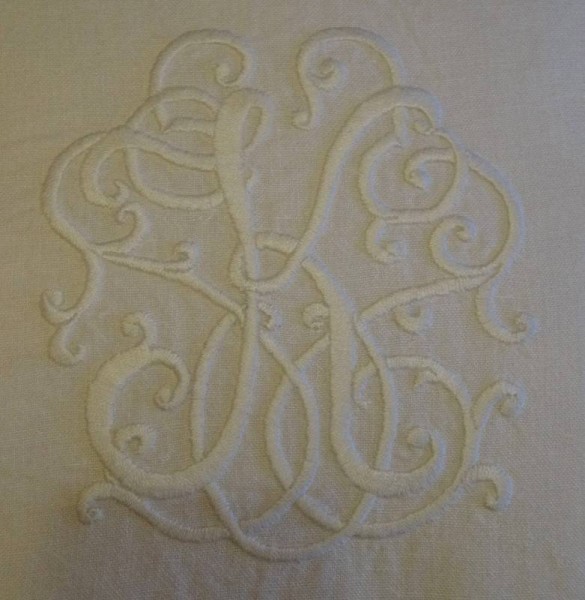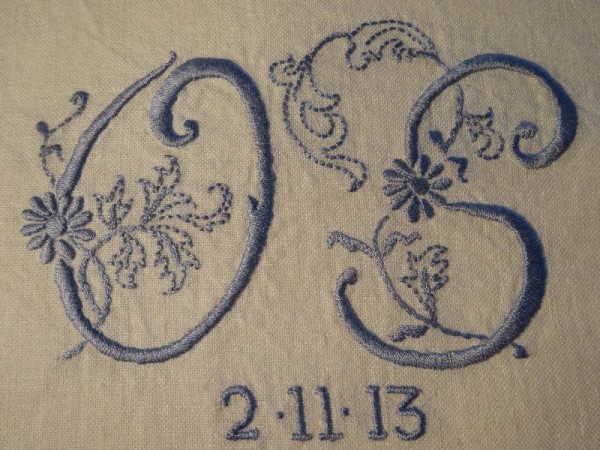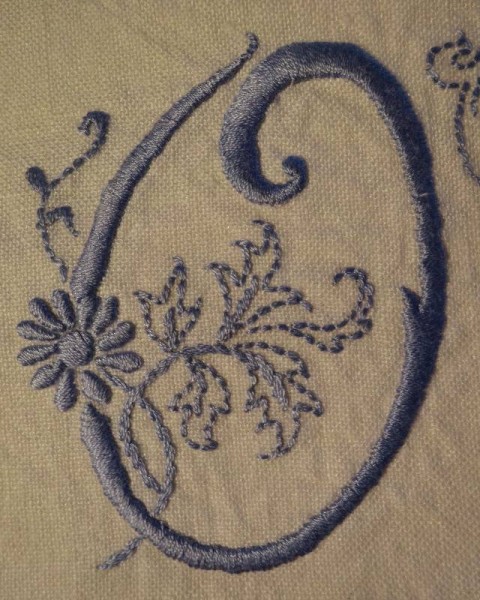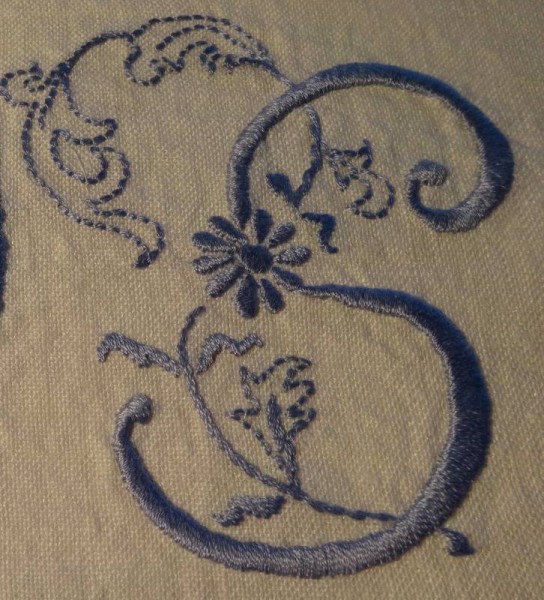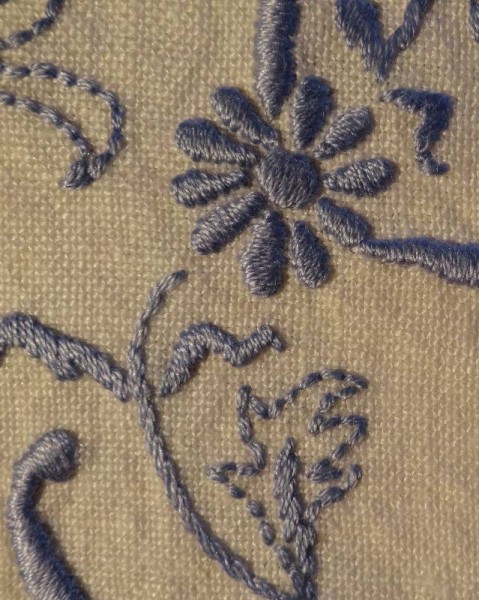I made this cushion for an old friend a couple of years ago found it in a slightly sorry state with broken mother-of pearl buttons in the bedroom where I was staying while up in London for a wedding last weekend. Having itchy fingers where mending is needed, I suggested to my friend that I bring it home, put new buttons on, wash and iron it and return it by post (I may actually have begged as I knew it would make a nice quick blog post at a time when I have a lot of embroidery to be done for the end of the month.)
The wedding took the form of a humanist wedding celebration which was a new experience for me. As I’m very familiar with the Church of England format (which is pretty much what the church has used since 1662 and I really like that historical reverberation) I missed the spiritual element and the comforting familiarity of well loved phrases and timeless texts. The celebrant peppered us with quotations and poems from many different sources in a way that seemed like a search for a voice of authority – so there a lot to think about. She also read from what she had asked the couple to write about what they loved about each other which I thought was a bit too personal – I assume they had given her permission to do this. Two Beatles songs instead of hymns (which are not permitted in this type of service) made us all realise how very difficult they are to sing communally after a lifetime of belting them out in the shower or the kitchen. The thing I don’t like at all at weddings is the whooping and clapping – it now happens in church too. (I think it comes from weddings in American films – as does the idea that the bride’s mother should process down the aisle with the bridesmaids). At least in our humanist service there can be no criticism that it’s spoiling the solemnity of the occasion. During the meal (the food was wonderful), in between courses, different people stood up to give what ranged from speechlets to the fully fledged version and I was pleased that amongst these was the bride. All in all, the above is just my own opinion – it was obvious that the couple had thought long and hard about their wedding and that this was exactly what they wanted. They looked deliriously happy and seemed to enjoy every minute of it, so I am happy for them and delighted to have been invited to such a joyous occasion.


